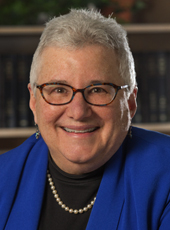Round 2 of Paycheck Protection Program
Paycheck Protection Program Loans for Small Businesses
by Lisa Arlyn Lowe
In addition to other stimulus aid and COVID relief, the Consolidated Appropriations Act, 2021 (the “Act”) passed by Congress on December 21, 2020 and signed into law by President Trump on December 27, 2020, provided for a new round of Paycheck Protection Program (“PPP”) loans. It is anticipated that applications for this second draw of PPP loans will open in early to mid-January 2021.
The Act also clarified a number of open issues with respect to the original PPP loans. Most notably, expenses paid with PPP funds that were forgiven are now deductible. Further, the expenses for which PPP funds may be used (in addition to mortgage interest, rent, and utilities) has been expanded to include:
- Software and cloud computing service payments to process payroll, billing, accounting, and inventory functions;
- Payments to suppliers of goods that are essential to operations at the time made;
- Costs related to looting, vandalism, and any public disturbances that occurred in 2020, to the extent not covered by insurance or other compensation; and,
- Costs related to compliance with health and safety regulations issued by CDC, HHS, OSHA, or any state or local government related to COVID-19 (e.g., purchasing personal protective equipment ).
Payroll costs have also been expanded to include group life, disability, vision and or dental insurance premiums. The rules requiring that at least 60% of the PPP loan be spent on payroll costs to be forgiven have not changed.
While loans under $150,000 will not be “automatically” forgiven, the Act does require the SBA to publish a new “one page” forgiveness application for those loans. Please note, however, that even though the SBA has already published 3 different forgiveness applications, borrowers MUST use the application provided by their lender and many lenders utilizing their own electronic portals have combined these applications into a single form.
To qualify for a new PPP loan or a second PPP loan, borrowers must:
- Employ no more than 300 employees per physical location;
- Have used or will use the full amount of their first PPP loan; and,
- Demonstrate at least a 25% reduction in gross receipts in any calendar quarter of 2020 vs 2019
Moreover, first time loans will be available to businesses that returned their first PPP loan or did not receive the full amount for which they qualified. The loan amount generally remains based on 2.5 times average monthly payroll. However, for borrowers in the hotel and food industry, the loan amount is increased to 3.5 times average monthly payroll. The maximum amount of the loan in the second round is capped at $2 million. Like the first round of PPP loans, seasonal employers will calculate their maximum loan amounts differently.
Eligible borrowers have been expanded to include certain 501(c)(6) organizations and housing cooperatives. Public companies and businesses that are more than 20% owned by a Chinese or Hong Kong company, have “significant operations” in China or Hong Kong, or have any board members that are Chinese residents are ineligible for a PPP loan.
The Act also amends the Bankruptcy Code and enables debtors in possession or trustees authorized to operate a debtor’s business to apply for and borrow a PPP loan.
Borrowers will now be able to choose their own covered periods for use of loan proceeds for eligible expenses commencing on the loan origination date and ending on any date no earlier than 8 weeks or later than 24 weeks of the date the funds were received. In addition, the requirement that the amount of PPP forgiveness be reduced by any grant received under an Economic Injury Disaster Loan (“EIDL”) has been eliminated. EIDL grants are not taxable and expenses paid for with those grants remain deductible.
We anticipate additional guidance from the SBA and Treasury clarifying the provisions of the new Act, including the requirements regarding reduction in revenue. We will continue to provide additional updates as they occur. In the meantime, please do not hesitate to contact Meyers Roman if you have any questions.
